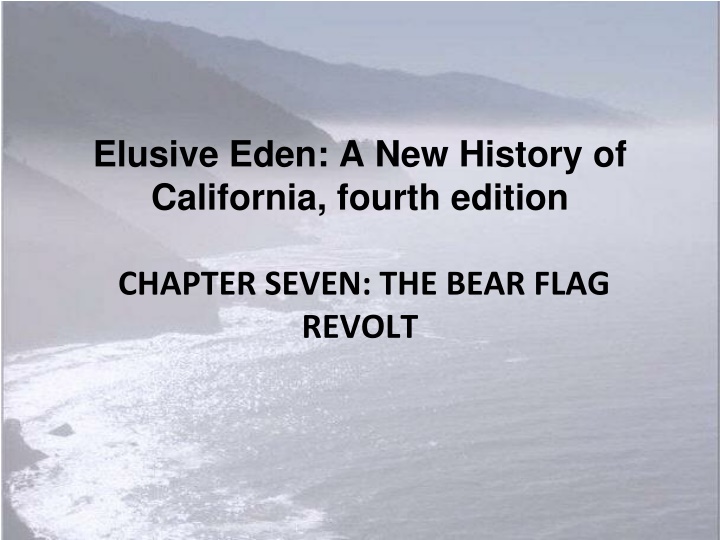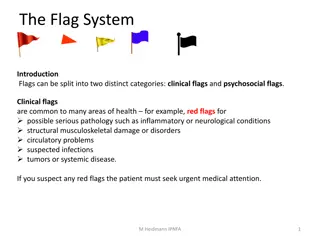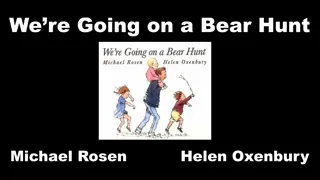The Bear Flag Revolt in California: A New Perspective
The fourth edition of "Elusive Eden: A New History of California" delves into Chapter Seven, exploring the Bear Flag Revolt of California in the early 1800s. It discusses the American interest in California, the concerns of Comandante General Jos Castro, and the interactions between Americans and Californios. The chapter sheds light on the tensions and power dynamics leading up to the historic event.
Uploaded on Sep 07, 2024 | 3 Views
Download Presentation

Please find below an Image/Link to download the presentation.
The content on the website is provided AS IS for your information and personal use only. It may not be sold, licensed, or shared on other websites without obtaining consent from the author.If you encounter any issues during the download, it is possible that the publisher has removed the file from their server.
You are allowed to download the files provided on this website for personal or commercial use, subject to the condition that they are used lawfully. All files are the property of their respective owners.
The content on the website is provided AS IS for your information and personal use only. It may not be sold, licensed, or shared on other websites without obtaining consent from the author.
E N D
Presentation Transcript
Elusive Eden: A New History of California, fourth edition CHAPTER SEVEN: THE BEAR FLAG REVOLT
AMERICAN INTEREST 1821 California the northernmost province of Mexico --Mexico declared independence 1811 --Spain agreed to release colony 1821 Mexican California dominated by Californios Rancheros dominated colonial economy, society --Hide and tallow trade most important economic activity --Handful of British, American merchants in San Diego, Monterey
Comandante General Jos Castro worried about American interest in Cal --stationed Monterey presidio --chief military official of the province --groomed by last Spanish governor of Alta California, Pablo Vicente de Sol --interim governor mid-1830s --1842, second in power only to Governor P o Pico
Castro worried about Americans in California --U.S. Corps of Topographical Engineers mapping possible train route from Missouri to California --John C. Fr mont's second expedition to Cal --Travelling with cannon, sixty soldiers, mountain men --Entered Cal spring 1846, exploring Central Valley
Frmont went to Monterey for supplies --Visited Castro with American consul Thomas O. Larkin --Castro assumed stopping off en route to Oregon --Fr mont assumed had Castro's permission to explore Cal
Frmont, men initially went north --Camped briefly near San Jos --February 22 1846 turned south again --Returned to Monterey Bay, turned east at Salinas River --Stopped at Rancho Alisal --home of American William P. Hartnell
Gen. Castro not happy --Saw threat in large company of armed Americans w/in 25 miles of Monterey --Didn't want Americans in settled coastal areas --Sent messenger to Fr mont ordering out of area
Frmont refused --Moved men to Gavilan Mountains --Fortified position overlooking San Juan Bautista, main road to Monterey --Raised American flag
Castro saw as provocative --Stationed troops to watch Fr mont --Called on Mexican civilians to repel invaders if necessary --Few responded --Stand off for 3 days
Worried Thomas O. Larkin as much as Castro --Arrived 1832 for hide and tallow trade --retained American citizenship --built thriving import/export business, store for settlers --1843 appointed U.S. consult to Mexico --1845 James K. Polk entrusted as secret agent --Larkin spying on British traders, promoting American annexation among Californios
March 6, 1846, Larkin reassured Castro American intentions friendly --Suggested standoff a misunderstanding March 8 sent message to Fr mont explaining how to deal with Castro March 10 Fr mont, men left Gavilan mountains, headed north --March 21 camped at American River near Sutter's Fort --April 24 headed north to Oregon
OVERLAND SETTLERS American trappers, traders already entering province --First Jedediah Smith in 1826 --Trapping beavers for William Ashley's Rocky Mountain Fur Company --Most trapped for season then left --Dozen or so settled in Cal
1841 first company of American settlers followed overland trail into Cal --34 in 1841 --38 in 1843 --53 in 1844 --260 in 1845 --William B. Ide party 100+ --Attracted to inland valleys above San Francisco, Sacramento --Some bought land, many "squatted"
Mexico closed borders to Americans --published notices in Midwestern newspapers --must get Mexican passports first same pattern in American conquest of Texas, 1830s --Americans declared independence October 1835 --Armed battles January, February 1836 --in 1846, Mexico still refused to accept Texas independence
Authorities in Mexico City ordered Castro to keep Americans out of Cal --Too few soldiers --Too little control over Mexican officials in Cal --Castro, P o Pico at odds --Pico civilian governor, located in Los Angeles --Castro in charge of customs house, military at Monterey --Pico demanded funds, Castro refused --Leaders focused on own battles, not American threat
March 1846 Castro began organizing northern defenses --Governor Pico convinced Castro planning overthrow --Americans heard Castro planning assault on them --Rumored Mexicans inspiring Indians to attack Americans at Sonoma
May 1846 Frmont camped at Klamath Lake --May 8 learned Lt. Archibald Gillespie carrying message from Pres. Polk --Fr mont rode back to meet Gillespie --No written record of conversation --Gillespie's later account differed from Fr mont's
Gillespie said: Mexican gov'n on verge of declaration of war against U.S. --Standing orders re Cal --U.S. officials would be "pleased" if events in Cal pushed Mexico into declaration Fr mont heard: provoke war with Mexico --May 10 Fr mont turned south --May 30 took up position near Sutter's Fort --Americans flooded into Fr mont's camp
Americans worried about Indian attacks, Mexican reprisals --Few had proper passports --Many squatting illegally on Spanish, Mexican land grants Fr mont launched preemptive attacks on Native villages --Attacked Maidu villages along Sacramento River
June 1846 Castro visited Sonoma --Met with Colonel Mariano Vallejo --commander of northern military district --Castro requisitioned horses for Santa Clara camp Alarmed "Zeke" Merritt, Robert Semple, others at Fr mont camp --decided to rustle horses --Americans flocked to Fr mont camp to prepare for battle
June 10 Merritt group caught up with Mexicans, horses at Cosumnes River --Took hoses to Sutter's Fort --sent Mexicans to Castro with message William B. Ide, other Americans clustered at Sutter's Fort --Castro sure to retaliate --Decided to take Sonoma garrison first
June 11, 1846, Ide, Merritt, 20 men headed to Sonoma ---American settlers joined along way --Group now 34 --June 14 rode into garrison just before daylight
Colonel Vallejo, handful of soldiers present --Vallejo not opposed to American control --Had discharged garrison --Sent Sem Yeto away --Vallejo welcomed Merritt, Semple, interpreter William Knight --Offered brandy, treated as social call --Semple drafted capitulation statement, Vallejo signed
Americans arrested Vallejo, officers --Arrested brother-in-law, Jacob Leese --Taken to Fr mont's camp, then to Sutter's Fort
THE REPUBLIC OF CALIFORNIA --Next step crucial --Castro certain to send army to take back garrison --Ide recommended independence
Designed and produced flag --Painted image of grizzly bear --One red star in corner --Red stripe across bottom --Flag provided name
Ide composed declaration of independence --Planned "republican" form of government for new republic --Peaceful neighbors welcome to join --Noted no support from U.S. government --Sent word to U.S. navy at San Francisco
Fortified garrison against attack --Rode through countryside taking supplies --w/in week 100 Americans at Sonoma garrison June 17, 1846, Gen. Castro called on Californios to repel invaders --Assured peaceful Americans they were safe
Raised 3 companies to march to Sonoma Osos, Mexicans battled near present-day town of Novato --Several Americans, Mexicans killed, injured June 20 Fr mont camped at American River near Sutter's Fort --Heard reports of battle at Novato --Combined party of American settlers, Fr mont's men rode to Sonoma --Raised Sonoma defenders to 200 --Americans happy to see 90 additional men, including sharpshooters, mountain men, and famous U.S. Army officer
Disguised Frmont, company of men rode south to San Francisco --July 2 took captured Yerba Buena --returned to Sonoma to celebrate 4thof July July 5, Fr mont assumed command of revolt --Called meeting of Bears, offered his leadership --U.S. naval officers from Portsmouth attended --Men enrolled under Fr mont --Company later called the "California Battalion"
Left 50 men at Sonoma, 300 headed for Monterey --By time reached Monterey, moot point --May 13 1846, U.S. declared war against Mexico over events in Texas --July 2 Commodore John D. Sloat sailed into Monterey Bay --July 7 raised American flag --End of the independent republic of California
THE END OF MEXICAN CALIFORNIA Gen. Castro only raised 160 men at Santa Clara --No match for Americans from Sonoma, Monterey Governor Pico raised army in south --Planned to fight Castro --July Castro, Pico combined forces
Castro, Pico retreated to Los Angeles --August Mexicans at San Diego overwhelmed by American forces --August 9, Castro, Pico fled to Mexico --Same time John C. Fr mont arrived with California Battalion
THE AFTERMATH November 1846 William B. Ide returned to his ranch on Sacramento River --1850-1852 Ide held various offices in Colusi County U.S. promoted Fr mont military governor of California --Refusal to accept orders from Stephen Kearney got him court-martialed
Fremont eventually pardoned --Elected U.S. Senator --1856, first presidential candidate of new Republican Party 1848 Jos Castro returned to Monterey --Invited by Col. Richard Mason, military governor of California --Gesture to smooth over relations between Americans, Californios
1850 Pioneers of California organized annual celebrations of Bear Flag Revolt --Recalled Osos as heroes --Californios "greasers" Californios saw differently --1874 Rosal a Vallejo de Leese interviewed --called Osos thieves, rapists, "desperados" --refused to send Indian servants to Fr mont camp
Natives saw differently --Salvador Vallejo reported Fr mont s men raped Native women in Napa Valley --Isidora Filomena Solano lost her land, livestock, all but one of her 8 children --Osos took horses, cattle, equipment belonging to Mar a Higuera Ju rez --Wanted more but Ju rez stopped them
"Rodeo Riders" Since California cattle ran wild over thousands acres of rangeland, rodeo, an annual roundup, was necessary for sorting out ownership and brand- ing. It became a festive occasion in California. Bancroft Library. of the Mexican
Jos Castro A lieutenant colonel in the Mexican army, Castro was addressed as General by virtue of his comandante California. Bancroft Library. position general as of
John C. Frmont Few persons more historians than John C. Fr mont. Self-serving and opportunistic, he also played an important role in the conquest of 1846 1847 and elected one of the first United States senators from the state. California State Library. have provoked among controversy California in was easily
Route of the Bear Flag Party The Bear Flag party captured Castro's horses, then took Sonoma, where the Republic of California was established. Mariano G. Vallejo, his brother, and his brother-in-law were sent to Sutter's Fort as prisoners.
Sonoma Plaza An early painting of Colonel Mariano Vallejo's compound at Sonoma, which the Bear Flag party seized in June 1846. Bancroft Library.
The Bear Flag The Bear Flag was raised at Sonoma by William B. Ide's men as the flag of the California Republic. Some accounts state that a green turf was painted under the bear, as in the present state flag of California. Bancroft Library.
Two Mountain Men Not all mountain men wore fringed clothing, but they were an awesome sight when they rode into Sonoma with Fr mont. Mountain men and "floaters" like Ezekiel Merritt made up a large portion of the California Battalion 1846 1847. Library. deerskin in Bancroft























